The mission of Electronics Departmentis is to study, develop, produce and integrate specific electronic instruments for the research projects of the scientific divisions and for the laboratory’s platforms.
The design activities range from analogue electronics interfacing with the detectors to digital systems for signal conditioning and acquisition. The department is organized into two groups: Electronics developments for physics (DEPHY) and CAD – Prototyping – Realization (CPR).
The department addresses discrete analogue and digital electronics, digital electronics, microelectronics, board design and assembly as well as electrotechnics.























